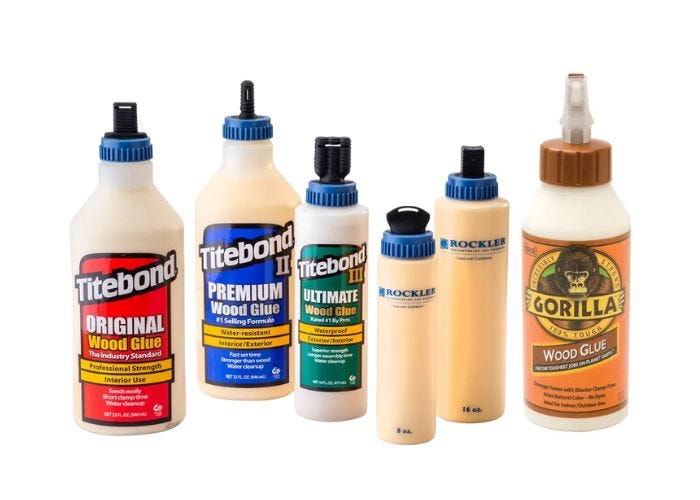Understanding Wood Glue

There's no question that advances in adhesives technology over the years have made life easier and more predictable for woodworkers. A byproduct of that, however, is a confusing variety of types and brands of adhesives and not a lot of clear information on how wood glues work and which ones work best for a given woodworking project.
That's too bad, because nearly every woodworker is utterly reliant on sticking things together with adhesives.
Take a few minutes to read through Charles B Vick's, "Adhesive Bonding of Wood Materials", and you'll know all of the important concepts along with a fun facts like:
Physical forces of attraction composed of three intermolecular attraction forces are believed to be important to the formation of bonds between adhesive polymers and molecular structures of wood. Generally called van der Waal's forces, these include dipole-dipole forces, which are positively and negatively charged polar molecules that have strong attractions for other polar molecules. Woodworking forums are a great source for information on woodworkers' actual experience using various glues. This discussion of the merits of two popular waterproof glues, for example, contains this no-nonsense comparison of Gorilla Glue and Titebond III:
Gorilla Glue vs Titebond Glue
- Gorilla Glue is a polyurethane glue and Titebond III is an aliphatic resin glue.
- Gorilla glue will adhere to more substances but Titebond III gives a better wood to wood bond.
- Gorilla Glue cannot be washed off your hands, it must wear away while Titebond III cleans up with water.
- Gorilla Glue foams excessively upon curing. The foam is gap filling but has no strength
- Titebond III does not foam & any excess can be wiped off with a damp cloth or sponge.
- Unless you need to fill a gap, Titebond III is the better choice. It's easier to work with especially on wood to wood gluing.
- If you're simply filling a gap with no strength required, use Gorilla Glue. If the gap filled portion will be stressed, use Epoxy.
Types of Wood Glue and Their Applications
Polyvinyl Acetate (PVA) - PVA is the most common wood glue, known for its ease of use and strong bond. It's ideal for indoor projects like furniture assembly and cabinetry. However, standard PVA isn't waterproof, so it's best suited for dry environments.
Aliphatic Resin (Yellow Glue) - Similar to PVA but with added heat and water resistance, aliphatic resin glues are favored for their quick setting time and strong initial tack. They're excellent for woodworking joints that require precise alignment.
Epoxy - A two-part adhesive known for its exceptional strength and gap-filling properties. Epoxy is suitable for bonding dissimilar materials and is often used in situations where maximum durability is required.
Polyurethane Glue - This glue expands as it cures, making it effective for bonding uneven surfaces. It's waterproof and suitable for outdoor projects, but the foaming action requires careful application to prevent mess.
Cyanoacrylate (CA) Glue - Also known as super glue, CA glue is perfect for quick repairs and small joints. It bonds rapidly but is brittle, so it's not recommended for load-bearing joints.
Hide Glue - Traditional animal-based glue that's still used in fine woodworking and instrument making due to its reversibility and strong bond. Liquid hide glue offers a longer open time, making it more user-friendly.
What Wood Glue Is Best
James Wright of Wood By Wright on YouTube recently conducted a massive test of common wood glue. 32 types of glue were pitted against each other to find out which was the best choice for one of four different situations: long grain to long grain, long grain to end grain, gap-filling, and exterior conditions. The answer may be different than you think. Check out the spreadsheet of compiled test results or watch the video below.
Keep the inspiration coming!
Subscribe to our newsletter for more woodworking tips and tricks



